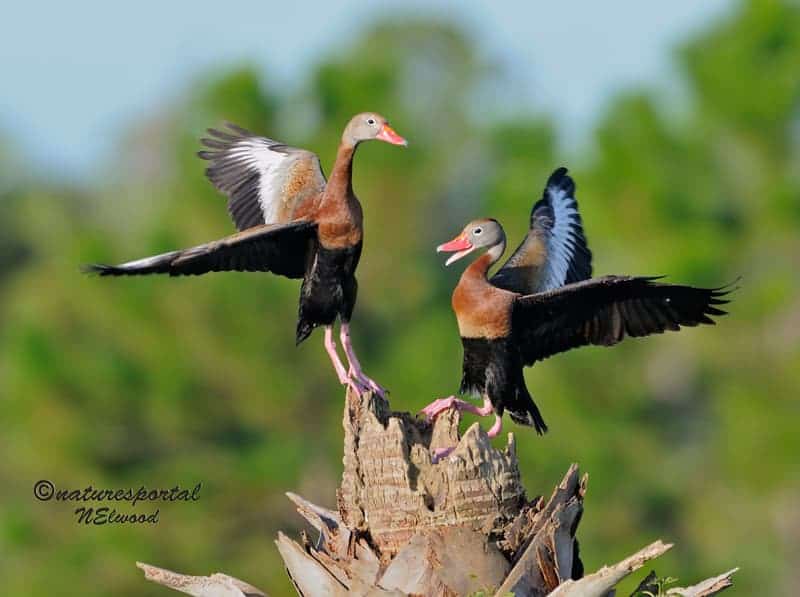If you live in Florida, you have just about year around photo ops with the black-bellied whistling duck. In the USA, it can be found also in parts of southeast Texas, seasonally in southeast Arizona and Louisiana’s Gulf Coast. Florida is one of the rare places, in the USA, that it breeds, otherwise in tropical Central to south central South America.
The black-bellied whistling duck is a mid size waterfowl. Its length ranges from 47 to 56 cm (19-22 in), body mass from 652 to 1,020 g (1.44 to 2.2 lb) and wingspan ranges from 76 to 94 cm (30 to 37 in). The males and females look alike.They are highly gregarious and whether breeding or not seem to stay in large flocks.
One early American ornithologist described this duck as “most un-duck-like”, because of its unique waterfowl appearance of an upright stance, long pink legs, and long neck. Also, it is quite unique among ducks in their strong monogamous pair-bond. This behavior is more associated with geese and swans. Both parents share in the raising of the young.
Their nests are mostly found in confines of a hollow tree, but they will nest on the ground when necessary. The ducklings leap from the nest cavities within two days of hatching, can feed themselves immediately, and stay with the parents for up to eight weeks.
Finally you ask, why “whistling” duck, well, they have a very noticeable and clear whistling call. I am lucky to live close to one of its breeding areas and and now is the breeding season. Below are just a few of my images of this colorful species or waterfowl.

All images are copyrighted by Nancy Elwood and Naturesportal
Nancy Elwood
Nancy Elwood is a Florida based professional nature and wildlife photographer. Her interest in the natural world started as a child reading and watching National Geographic. After graduating from Florida State University School of Nursing, she developed her interest in photography travelling with several National Geographic photographers to Africa, Antarctica and the Falkland Islands. With them she started to hone her skills in capturing natures wonders through a camera lens. Nancy now, when not in the field, shows her work in juried art shows and runs photography workshops.
Leave a Reply